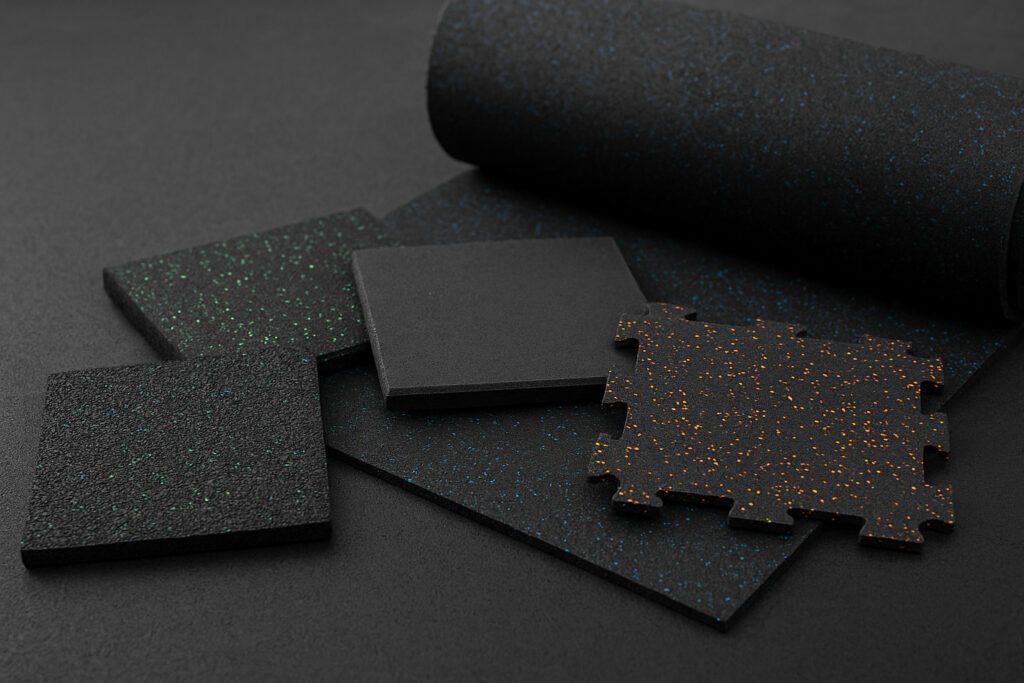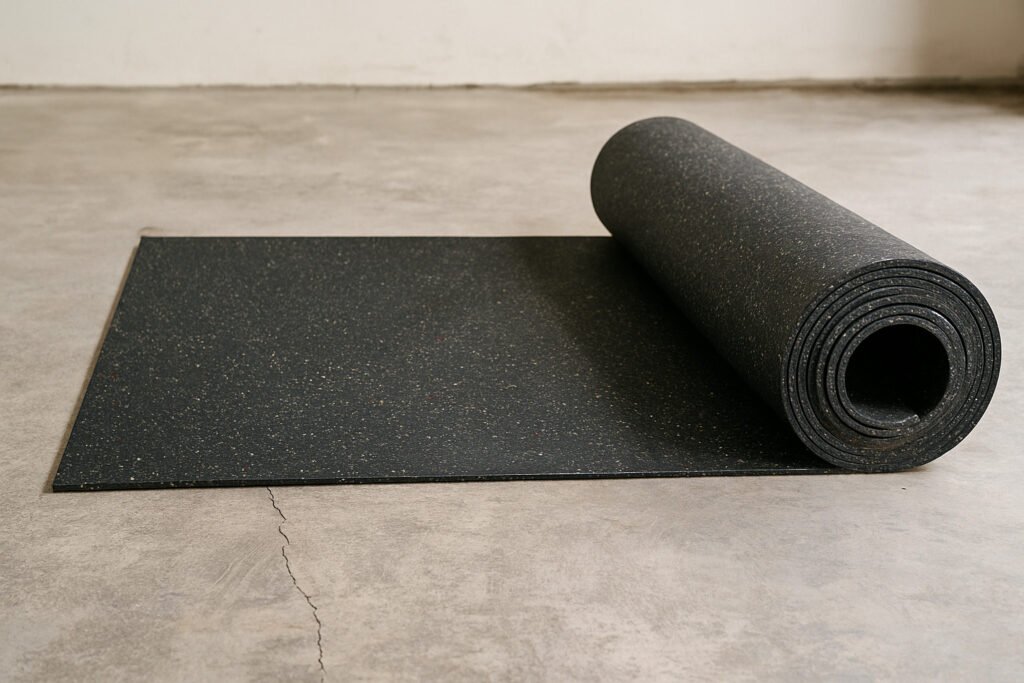What’s the best rubber flooring for commercial gyms?
Rubber flooring is a core investment in any commercial gym, but not all floors are made equal—choose wrong, and you risk injuries, wear, and costly replacements.
The best rubber flooring for commercial gyms depends on the specific zones: heavy weight areas need high-impact rubber tiles, while lighter zones like yoga or cardio benefit from seamless rubber rolls.

When outfitting a gym, the floor sets the tone—literally. It’s where comfort, safety, durability, and performance meet. But with so many options on the market, how do you decide what’s best? Let’s break down the top contenders.
Are composite rubber tiles better for heavy-duty gym zones?
Composite rubber tiles combine top performance with a sleek look, making them the go-to for elite gyms that want both function and style.
Yes—composite rubber tiles are the best for weightlifting zones because of their layered EPDM surface, which offers top-level durability, shock absorption, and wear resistance.

These tiles are made from an SBR base and topped with a 1.5mm laminated EPDM roll, available in color blends up to 100% EPDM. They resist wear, clean easily, and provide a premium finish that enhances brand appeal in high-end gyms. Their thickness ranges from 15mm to 50mm, perfect for handling impact from free weights and machines.
Composite Rubber Tile Specification Table
| Feature | Details |
|---|---|
| Sizes | 500×500mm, 600×600mm, 1000×1000mm |
| Thickness | 15mm – 50mm |
| Surface Material | Laminated EPDM (15%–100%) |
| Applications | Weightlifting, high-end gyms |
| Benefits | High durability, visual appeal |
What’s the easiest gym flooring to install and replace?
Fast installations reduce labor costs and keep your gym operational. If flexibility matters, interlocking rubber tiles are your best friend.
Interlocking rubber tiles are easiest to install and replace—no glue required, and they snap into place like puzzle pieces.

These tiles are ideal for home gyms, functional areas, or short-term setups. They come either molded from fine SBR or cut from composite EPDM tiles, offering various surface options. Because they can be installed without adhesive, they’re simple to move or replace.
Interlocking Rubber Tile Options
| Material Type | Description |
|---|---|
| 100% SBR | Budget-friendly, shock-absorbing |
| SBR + EPDM dots | Improved look, better color options |
| Composite with EPDM top | High-end, colorful, durable |
| Thickness Range | 10mm – 25mm |
| Size | 500×500mm |
What’s the most cost-effective rubber flooring for large gyms?
When covering wide spaces like yoga rooms or cardio areas, price per square meter matters. Rubber rolls shine in this situation.
Rubber rolls are the most economical for large commercial gyms—easy to install, smooth looking, and customizable in length.

Made with SBR or SBR blended with EPDM, these rolls offer a seamless appearance and enough cushion for low-impact zones. They’re not ideal for free weight areas but are perfect for general fitness zones. You can choose from different colors and speckles to match your gym branding.
Rubber Roll Specification Table
| Width | 1.0m or 1.25m |
|---|---|
| Thickness | 3mm – 12mm |
| Length | 8m – 15m (customizable) |
| Material | SBR / SBR+EPDM mix |
| Application | Cardio, yoga, walkways |
| Installation | Tape or glue-down |
What about areas with heavy impact and sound concerns?
Not all rubber floors handle noise well. For spaces where lifting, dropping, and noise are constant, thicker, dense options like tiny granules rubber tiles are a solid solution.
Tiny granules rubber tiles provide high shock absorption and excellent sound insulation—perfect for weight zones and free lifting areas.

These are made from fine SBR granules and optionally mixed with EPDM dots. Their structure minimizes bounce and reduces impact noise. Available in black or with colored dots, they’re easy to clean and highly durable. They’re especially useful for CrossFit areas and functional training spaces.
Tiny Granules Rubber Tile Details
| Thickness Options | 15mm – 50mm |
|---|---|
| Color Variants | All black / Orange, Green dots |
| Sizes | 500×500mm, 600×600mm, 1000×1000mm |
| Key Traits | Shock absorption, anti-slip, quiet |
Conclusion
The best gym flooring depends on the zone—use composite tiles for weights, rolls for open spaces, and interlocking tiles for fast, flexible setup.
